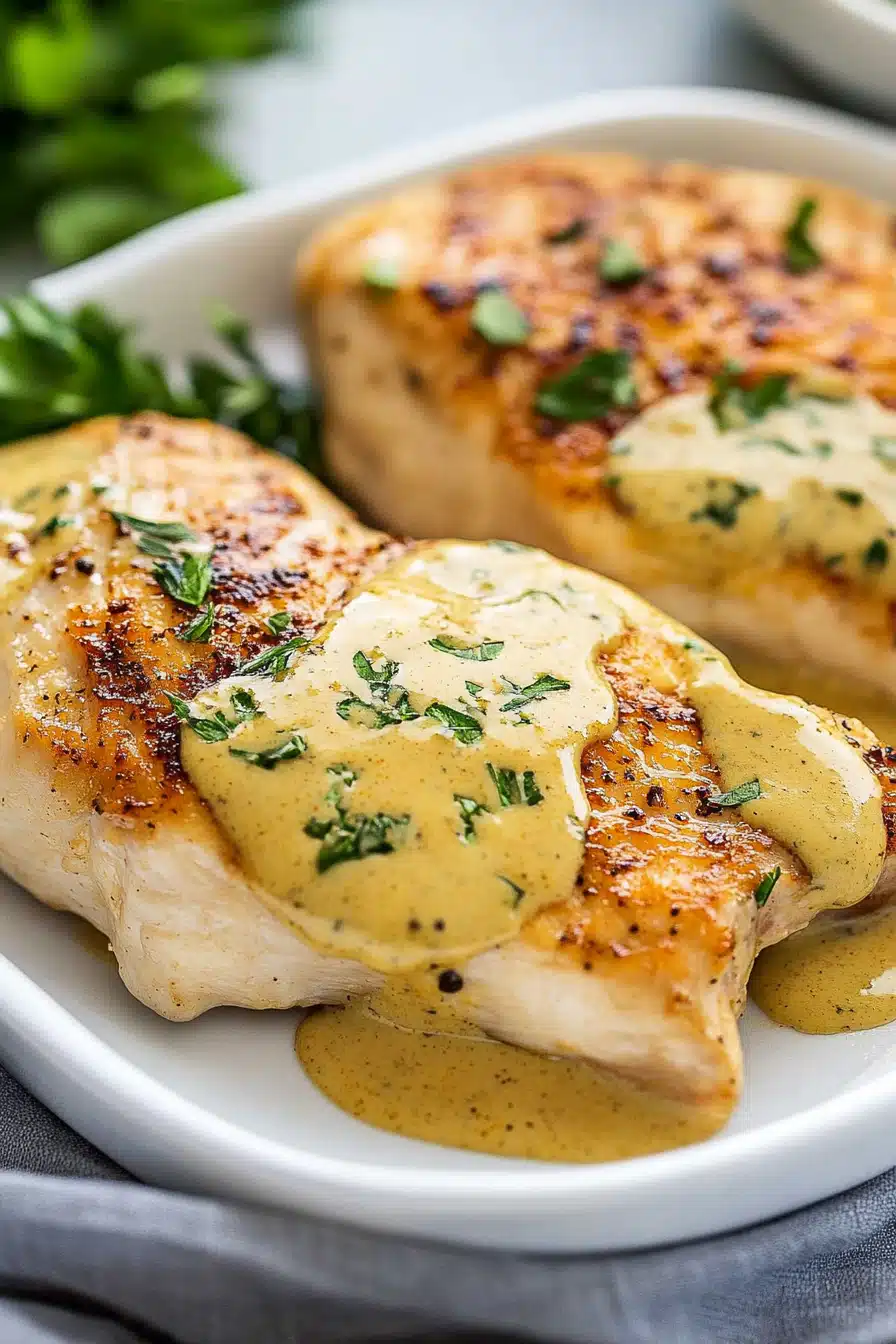As you dive into the delightful world of culinary creations, this mustard chicken recipe will surely captivate your taste buds. With the perfect blend of flavors, it’s a gourmet dish made accessible to home cooks. Mustard, being the focal point of this dish, elevates the chicken to an unparalleled level of deliciousness right in your own kitchen.

Growing up, this recipe was always a staple in our family gatherings. My grandmother used to prepare this mustard chicken on Sundays, filling the house with an aroma that signaled laughter and togetherness. It became a family favorite, not just for its taste, but for the cherished memories it created, year after year.
Why You’ll Love This Recipe
This mustard chicken recipe has a unique blend of spicy and savory flavors that will make your meals stand out. It’s perfect for easy weeknight dinners or fancy dinner parties. The preparation is straightforward, yet the results feel gourmet. Plus, the dish is versatile, complementing a variety of side dishes and satisfies both adults and children alike.
Ingredients Notes
The key to this recipe is using high-quality mustard. Whether it’s Dijon or whole grain, it needs to be robust in flavor. If you are looking for a milder taste, honey mustard is a great alternative. Fresh garlic and herbs like thyme or rosemary add depth. Chicken thighs provide juiciness, but chicken breasts work excellently if preferred.

Recipe Steps
Step 1
Begin by preheating your oven to 375°F (190°C). Lightly oil a baking dish and set it aside. This ensures the chicken doesn’t stick and cooks evenly.
Step 2
In a small bowl, combine 1/3 cup of mustard, 2 tablespoons of olive oil, minced garlic, a squeeze of lemon, salt, and pepper. Mix until well-blended to create a luscious marinade.
Step 3
Coat the chicken thighs generously with the marinade. Let them sit for at least 30 minutes. This step is crucial for letting the flavors marry well with the chicken.
Step 4
Place the marinated chicken in the prepared baking dish. Sprinkle fresh thyme over the top. Bake in the preheated oven for 25-30 minutes or until the chicken reaches an internal temperature of 165°F (75°C).
Step 5
Once baked, let the chicken rest for 5 minutes before serving. This allows the juices to redistribute, ensuring the meat remains moist and tender.
Storage Options
Leftover mustard chicken stores beautifully. Keep it in an airtight container in the fridge for up to three days. If you wish to freeze it, place the chicken in a freezer-safe bag, ensuring it is well-sealed to prevent freezer burn. Thaw in the refrigerator overnight and reheat in a preheated oven at 350°F until warmed through.
Variations & Substitutions
This recipe is easily adaptable to suit dietary preferences. Use boneless, skinless chicken breasts for a leaner option, or try turkey pieces for a different flavor profile. For a vegan version, replace the chicken with cauliflower florets. Spice enthusiasts can add red pepper flakes for a little heat.
Serving Suggestions
This mustard chicken pairs wonderfully with roasted vegetables or a fresh salad. For a more hearty meal, serve it with creamy mashed potatoes or steamed rice. It’s also excellent when accompanied by a crisp white wine or a full-bodied red for a luxurious dining experience.

Frequently Asked Questions
Can I use other types of mustard? Absolutely! Mustard varieties such as spicy brown or honey mustard can be used based on your flavor preference. Each type of mustard will impart a unique nuance to the dish, allowing you to tailor it to your liking.
What if I don’t have fresh herbs? No worries here, dried herbs can be an excellent substitute. It’s best to use them sparingly, as they tend to have a more concentrated flavor. Typically, one-third of the amount of fresh herbs is a good rule of thumb.
Is there a vegan substitute for chicken in this recipe? Yes, you can use firm tofu or chickpeas as a plant-based alternative. Marinate them similarly to the chicken to infuse flavor before roasting them in the oven. The cooking time will vary slightly, so keep an eye on them to avoid overcooking.

